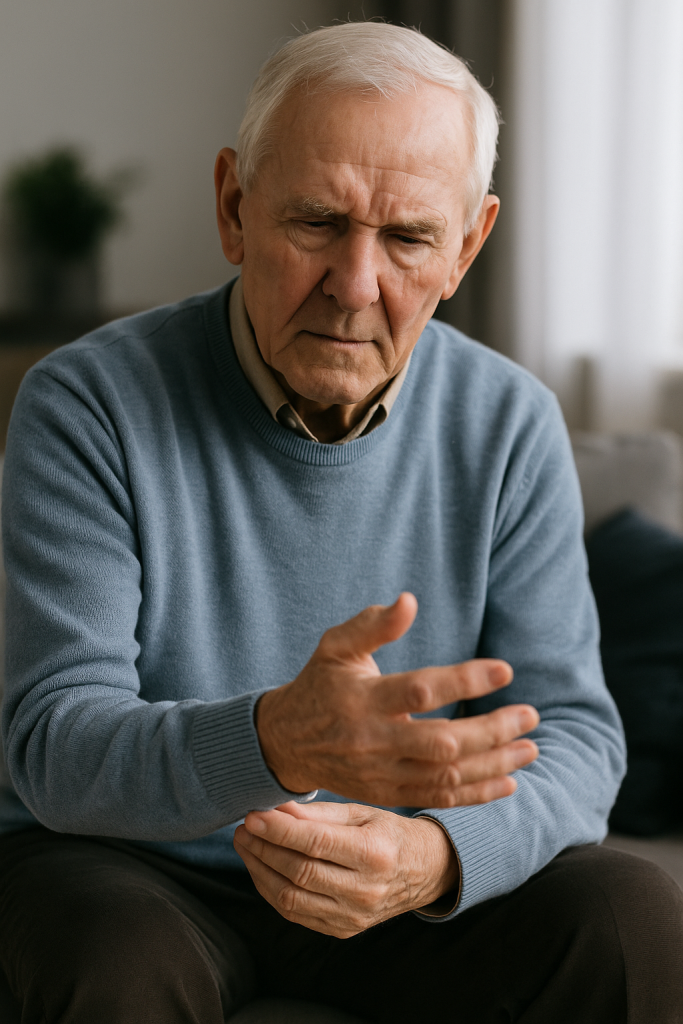Introduction to Parkinson’s Disease
Parkinson’s disease is a progressive neurological disorder that affects movement and coordination. It develops gradually, sometimes starting with a barely noticeable tremor in one hand. But beyond tremors, Parkinson’s can impact almost every aspect of life. This guide is here to help you understand the disease, its effects, and how people live well despite the challenges.

Why This Topic Matters Today
Millions of people around the world live with Parkinson’s. Understanding this condition isn’t just for doctors—family members, caregivers, and anyone in the community should know the basics to support those affected.
Who Is Most Affected?
While Parkinson’s often affects people over 60, early-onset cases are also seen. Men are more likely than women to develop it. Genetics, environmental factors, and age all play a role.
What is Parkinson’s Disease?
Medical Definition
Parkinson’s disease is a neurodegenerative disorder that affects dopamine-producing neurons in a specific area of the brain called the substantia nigra. As these neurons die, movement and coordination become more difficult.
How It Affects the Brain
The brain relies on dopamine to send messages that control movement. In Parkinson’s, dopamine levels decrease, leading to symptoms like stiffness, slowness, and tremors.
Is It Curable?
Unfortunately, there is no known cure. However, treatments are available that can significantly improve quality of life and slow the disease’s progression.
Causes and Risk Factors
Genetic Influences
Some people inherit mutations in certain genes that increase their risk. However, this is rare and not the primary cause for most people.
Environmental Triggers
Exposure to toxins like pesticides and herbicides may increase the risk, especially in rural areas or among agricultural workers.
Age and Gender Impact
Parkinson’s risk increases with age. It is more common in men than women, though the reasons for this difference are not fully understood.
Early Signs and Symptoms
Subtle Motor Signs
These include tremors in fingers or hands, smaller handwriting, slower movements, and changes in facial expression.
Non-Motor Symptoms
Many people experience depression, constipation, sleep disorders, or a reduced sense of smell before any motor issues appear.
How to Spot It Early
If you notice any of these symptoms, it’s important to see a neurologist. Early detection allows for earlier treatment and planning.
How Parkinson’s Is Diagnosed
Physical Exams
A neurologist will look for tremors, stiffness, and movement problems through clinical observation.
Brain Imaging
MRI and DaTscan imaging can support a diagnosis but are usually used to rule out other conditions.
Misdiagnosis Risks
Other conditions can mimic Parkinson’s. That’s why an experienced specialist is essential for an accurate diagnosis.
Stages of Parkinson’s Disease
Stage 1 – Mild Symptoms
Symptoms may affect one side of the body. Daily activities are not yet severely impacted.
Stage 2 – Movement Difficulty
Symptoms appear on both sides. Daily tasks become more challenging but manageable.
Stage 3 – Mid-Stage Challenges
Balance issues begin. Falls may occur. Independence starts to decline.
Stage 4 & 5 – Advanced Stages
At these stages, patients need help with most activities and may be confined to a wheelchair or bed.
Managing Parkinson’s Disease
Medications and Side Effects
Common medications like Levodopa increase dopamine. Side effects can include nausea, dizziness, or involuntary movements.
Physical and Occupational Therapy
These therapies help improve flexibility, posture, and everyday function, keeping patients independent longer.
Speech Therapy
Speech often becomes soft or slurred. Therapists can help improve voice strength and clarity.
Lifestyle Tips for Living with Parkinson’s
Diet and Nutrition
A Mediterranean diet rich in fruits, vegetables, and whole grains can support brain health and reduce symptoms.
Daily Routines
Structure and consistency help patients manage fatigue and keep active.
Exercise and Movement
Daily activity such as walking, yoga, or tai chi can improve balance and slow progression.
Support Systems and Caregiving
Family Support
Caregivers play a huge role in emotional and physical support. Communication is key.
Finding a Specialist
Neurologists or movement disorder specialists can offer more tailored treatment.
Joining a Support Group
Support groups reduce isolation, provide education, and boost mental health.
New Research and Treatment Innovations
Stem Cell Therapy
Ongoing trials explore how stem cells might regenerate dopamine-producing neurons.
Deep Brain Stimulation (DBS)
DBS implants electrical devices to regulate movement. It’s effective in reducing symptoms for many.
Promising Clinical Trials in the USA
Innovations are being tested every day, with the hope of reversing or halting disease progression.
Natural and Holistic Approaches
Supplements
CoQ10, omega-3, and vitamin D may support brain health, though always consult your doctor first.
Herbal Remedies
Some people try mucuna pruriens or green tea extracts, but scientific evidence is limited.
Mindfulness & Yoga
Mind-body practices can reduce stress and improve emotional well-being.
Coping Emotionally with Parkinson’s
Mental Health Support
Depression and anxiety are common. Counseling and medication can help.
Dealing with Depression
Routine, support groups, and open conversations with loved ones can provide relief.
Staying Motivated
Setting goals and celebrating small wins helps maintain a positive outlook.
Prevention and Brain Health
Habits That Help Reduce Risk
Exercise, healthy eating, and mental engagement lower overall brain degeneration risk.
Brain Exercises
Puzzles, memory games, and learning new skills keep your brain active.
Early Checkups
Routine neurological exams, especially if you’re at risk, can help catch early signs.
Conclusion
Parkinson’s may be a lifelong condition, but it doesn’t define a person’s entire life. With proper support, treatment, and knowledge, individuals can continue to lead meaningful, fulfilling lives. Stay informed, seek help early, and remember—you’re not alone.
FAQs
What age does Parkinson’s usually start?
Typically after age 60, though early-onset cases may occur in people under 50.
Can stress worsen Parkinson’s?
Yes, stress can intensify symptoms like tremors and stiffness.
Is Parkinson’s fatal?
It’s not directly fatal, but complications can be life-threatening if unmanaged.
How fast does Parkinson’s progress?
Progression varies. Some decline rapidly, others live decades with manageable symptoms.
Can you live a normal life with Parkinson’s?
Yes, especially in early stages with a good treatment plan and lifestyle support.
Leave a Reply